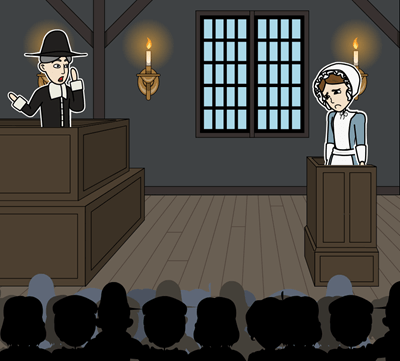The Crucible Five Act Structure Summary Storyboard

You can find this storyboard in the following articles and resources:

Five Act Structure: The Dramatic Structure
Lesson Plans by Rebecca Ray
Aristotle was one of the first to write about drama and describe its three segments: beginning, middle, and end. Many centuries later, a German playwright, Gustav Freytag, developed the five-act structure commonly used today to analyze classical and Shakespearean dramas. The pattern of this five-act structure can be seen in the familiar plot diagram.

The Crucible by Arthur Miller
Lesson Plans by Rebecca Ray
The Crucible is a play with many allegorical references. Written during the 1950s but set in the 1600s, Arthur Miller used the Salem witch trials in Massachusetts to represent the figurative witch hunt for communists in the United States,commonly known as the 'Red Scare'. Using actual court manuscripts and primary documents, Miller brings to life the people of Salem, and the atrocities the occurred there, in this heart-wrenching play.
'
Storyboard Description
The Crucible Summary - Five Act Structure
Storyboard Text
- ACT 1 - THE EXPOSITION
- ACT 2 - CONFLICT/RISING ACTION
- Confessed Witches
- ACT 3 - CLIMAX
- ACT 4 - FALLING ACTION
- ACT 5 - EPILOGUE
- A group of young girls were dancing and doing voodoo in the woods. To save themselves from being punished, the girls claim that they know others in the town who have signed the Devil's black book. The minister decides that he should call Reverend Hale, a witchcraft expert.
- Hale begins to place half the town on trial for witchcraft. Abigail, the oldest girl, speaks to John Proctor in hopes of rekindling their adulterous relationship; Proctor snubs her. Abigail accuses John's wife.
- In an attempt to uncover the deception of the young girls, John Proctor brings Mary Warren to testify that Abigail is lying to the court. However, the girls turn on Mary and say that she is being bewitched by Proctor. Both he and his wife are arrested.
- The accused are asked to confess. Some do so to save their lives, others refuse to preserve their names. In an attempt to bring out the truth, Proctor confesses his adultery. But when they ask his wife, she lies to protect her husband's honor. He is hanged.
- In the end, minister Parris is voted out of office. A rumor that Abigail became a prostitute in Boston circulates throughout Salem. Elizabeth Proctor remarries, and the farms of the executed go untended for years.
Over 30 Million Storyboards Created








